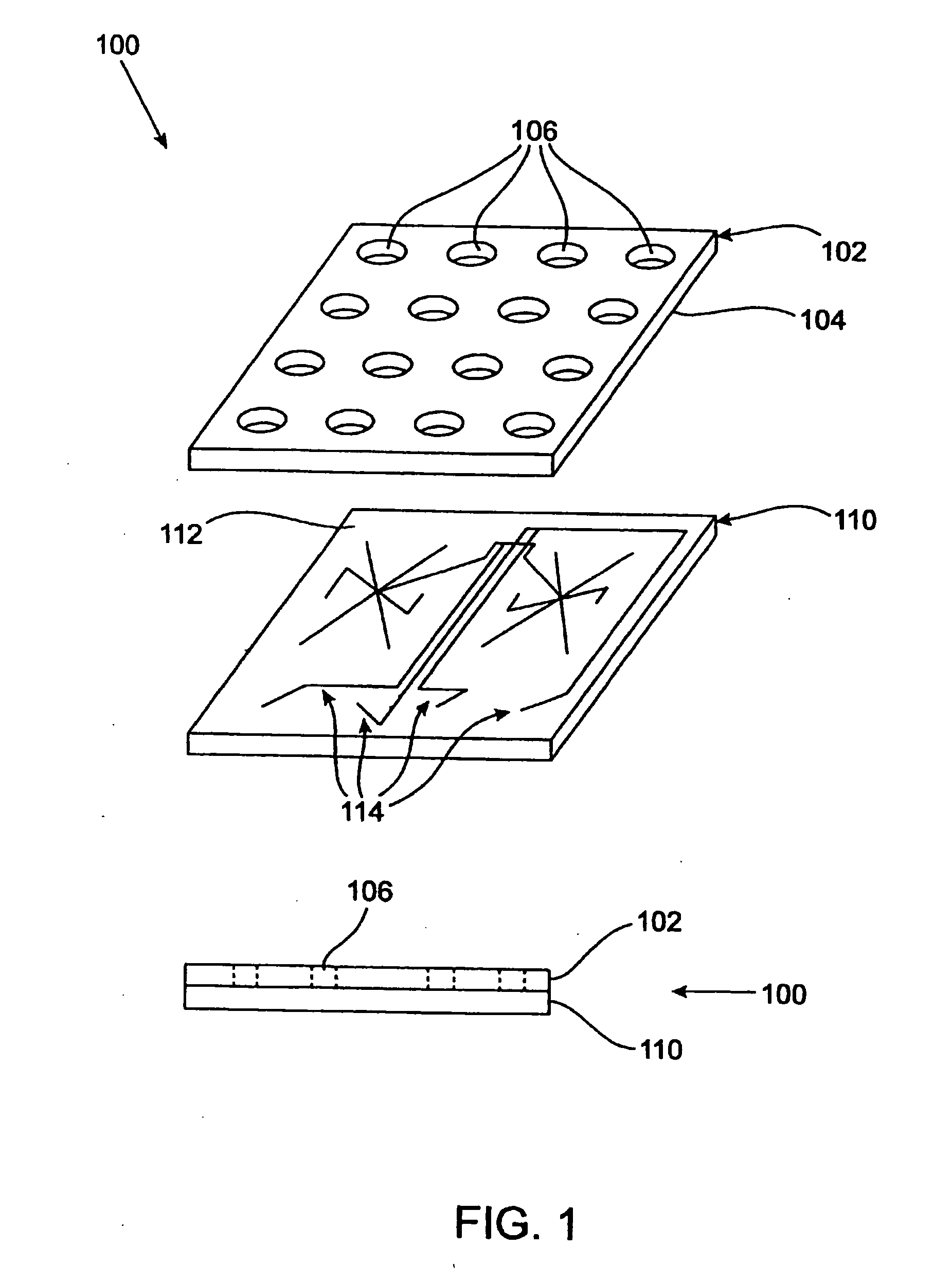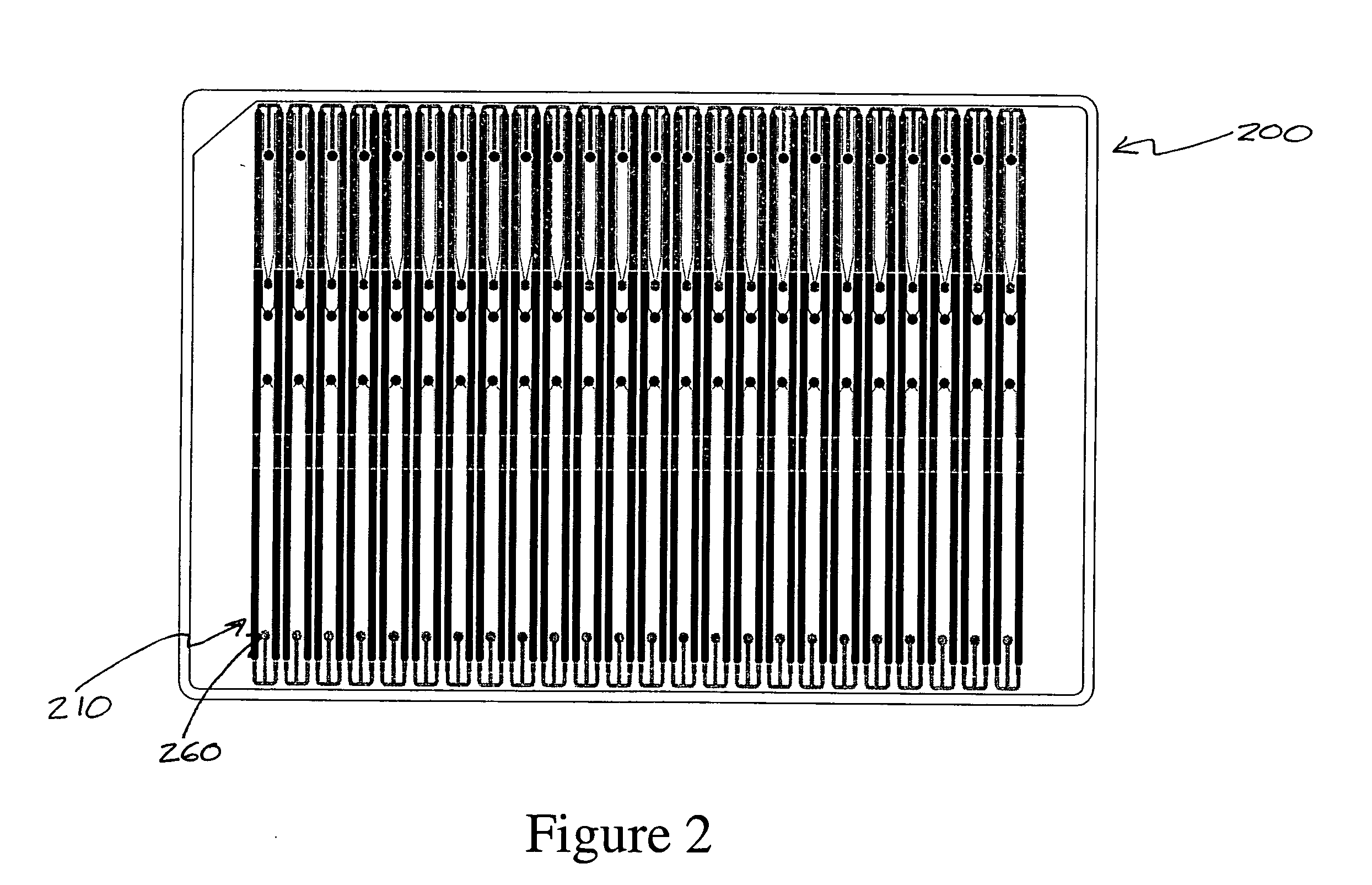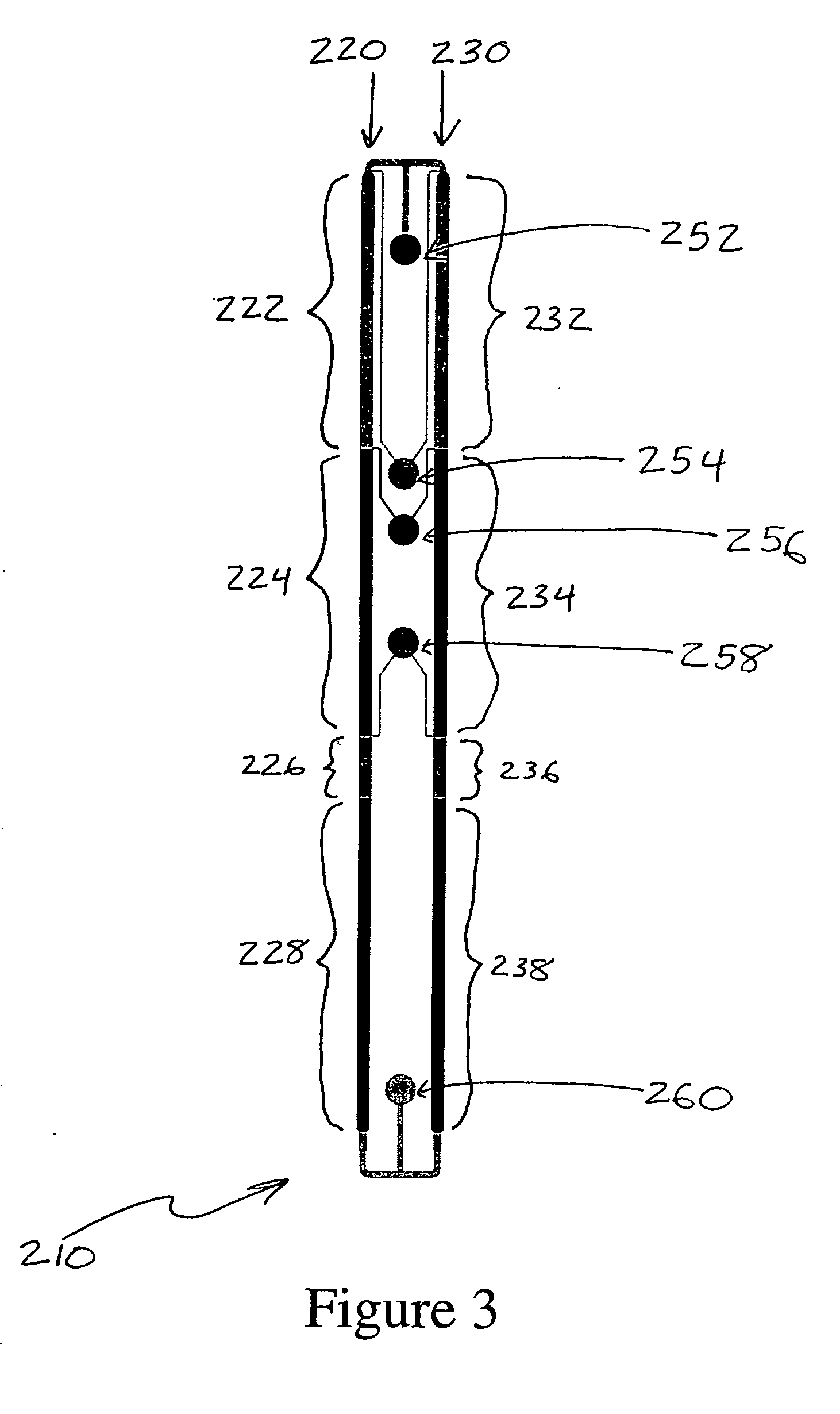Method and apparatus for performing peptide digestion on a microfluidic device
a microfluidic device and peptide technology, applied in the field of proteins analysis, can solve the problems of ineffective application, inability to effectively identify individual proteins, and ineffective 2-de methods that only work in isolating the most abundant proteins
- Summary
- Abstract
- Description
- Claims
- Application Information
AI Technical Summary
Benefits of technology
Problems solved by technology
Method used
Image
Examples
example
[0033] In a specific implementation of the microfluidic devices shown in FIGS. 2 and 3, the temperature of channel segments 222 and 232 is set to 50° C., while the temperature in channel segments 228 and 238 is set to 37° C. The temperature of the other channel segments is not controlled. The protein sample place in sample reservoir 252 contains protein at a concentration of 1 mg / mL in a solution of 7M guanidine-HCl in 100 mM ammonium bicarbonate buffer. The first reagent reservoir 254 contains 1M dithiothreitol, the second reagent reservoir contains 1M iodoacetic acid, and the third reagent reservoir contains 1M dithiothreitol. The flow through channels 220 and 230 is driven by applying a pressure of −4.5 psig to reservoir 260. The first channel segments 222 and 232 are 40 mm in length, 150 μm deep, and 700 μm wide. This results in a residence time of approximately 270 seconds for the fluid flowing through those channel segments 222 and 232. The second and third channel segments 22...
PUM
 Login to View More
Login to View More Abstract
Description
Claims
Application Information
 Login to View More
Login to View More - R&D
- Intellectual Property
- Life Sciences
- Materials
- Tech Scout
- Unparalleled Data Quality
- Higher Quality Content
- 60% Fewer Hallucinations
Browse by: Latest US Patents, China's latest patents, Technical Efficacy Thesaurus, Application Domain, Technology Topic, Popular Technical Reports.
© 2025 PatSnap. All rights reserved.Legal|Privacy policy|Modern Slavery Act Transparency Statement|Sitemap|About US| Contact US: help@patsnap.com



